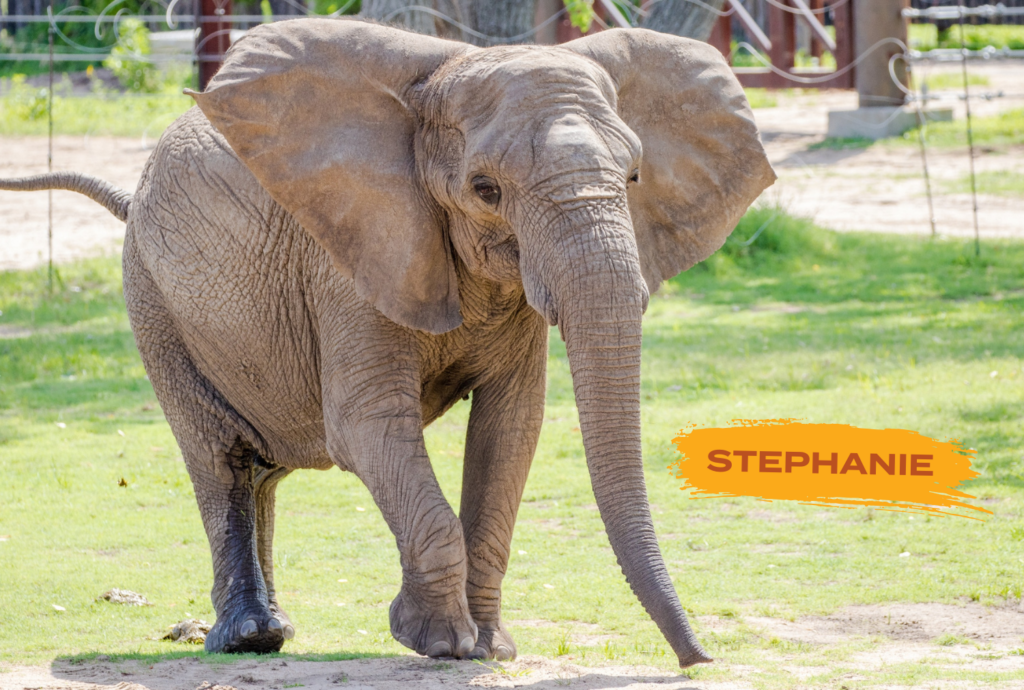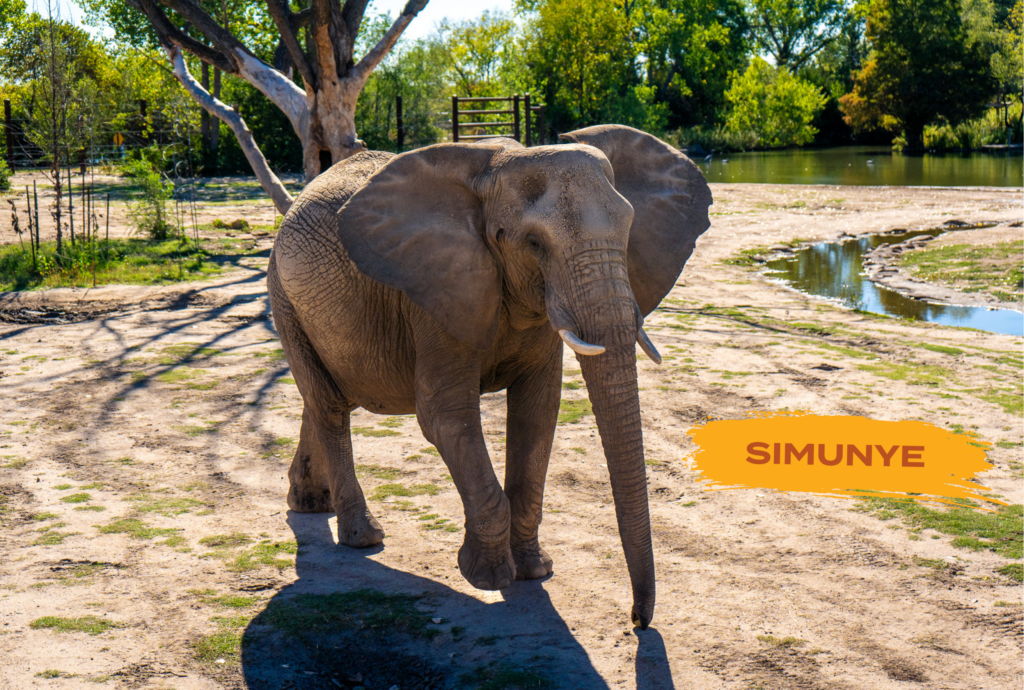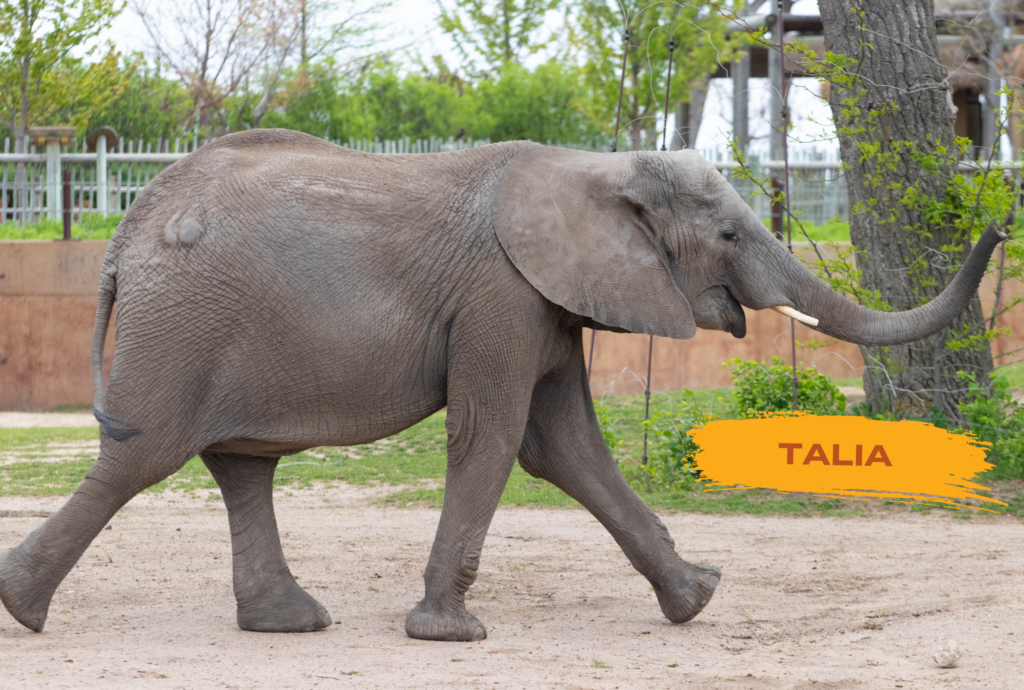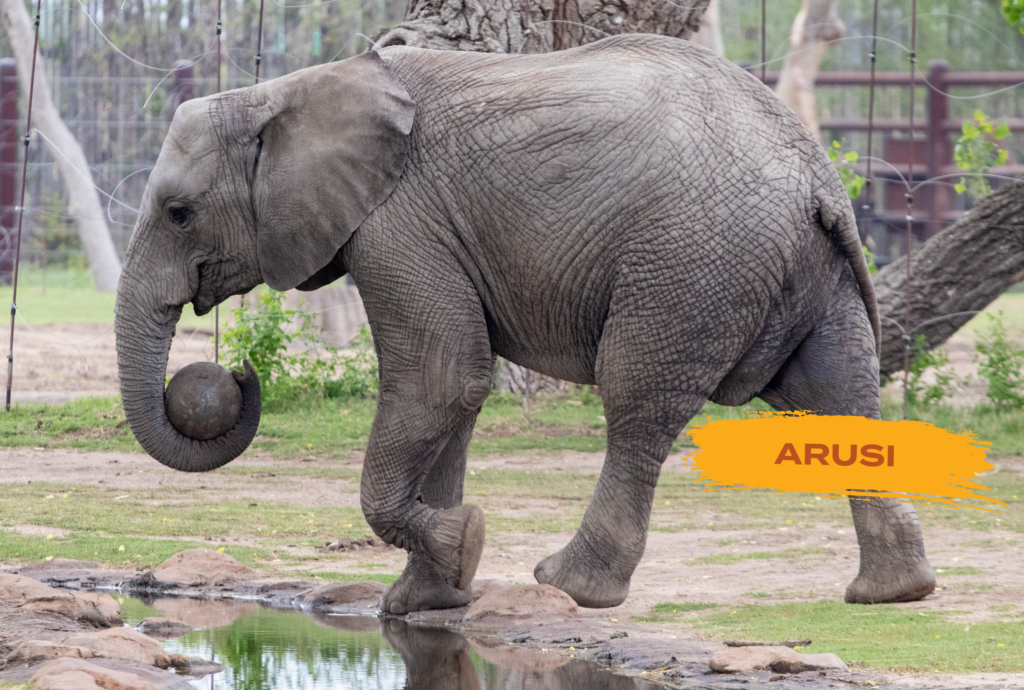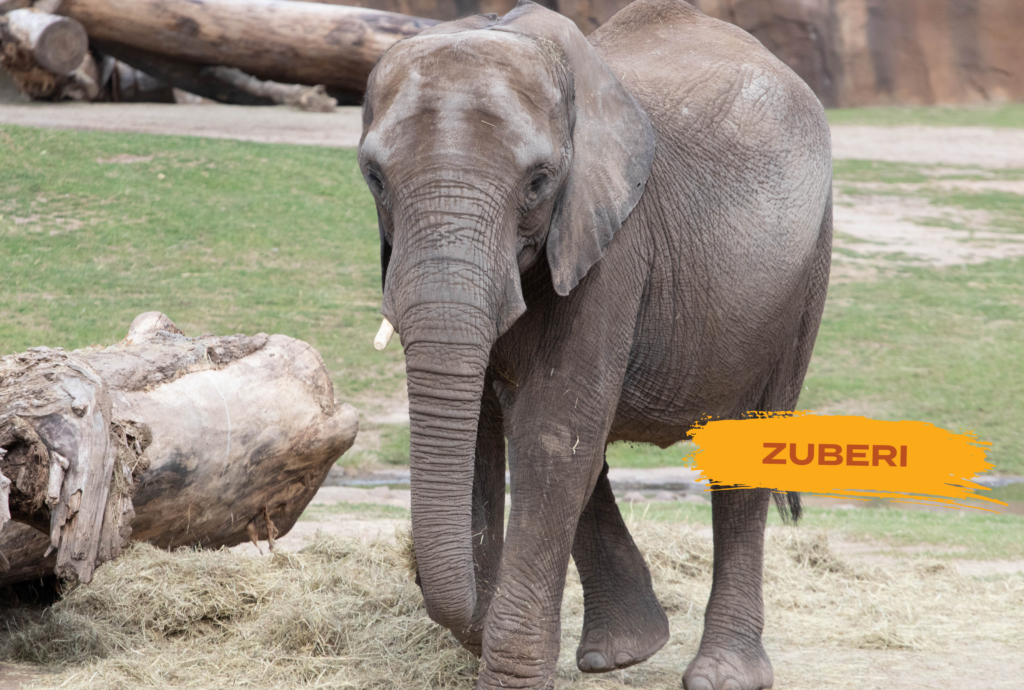African elephant
Reed Family Elephants of the Zambezi River Valley·Mammal
Six of the elephants at the Sedgwick County Zoo arrived in March 2016 from drought-stricken Swaziland as part of an ongoing rescue mission to provide a safe haven and more secure future for the animals.
The habitat's design was based on scientific research, providing for the herd's complex physical, mental and social needs.
-

- Conservation StatusVulnerable
- Life span30-55 years
-
Body size5,000-14,000 pounds.
Up to 13 ft. at shoulders. - Native habitat Savanna and equatorial forest of Africa
- DietGrasses and trees
Meet Our Elephants
- StephanieStephanie (pronounced stef-uh-nee) is 54 years old, matriarch of the herd and one of the zoo’s oldest residents. She is shorter than the rest with big eyes, a strong willed personality, no tusks, and has the most wrinkles.
- CalleeCallee (kal-ee) is 24 years old and the only male in the herd. He is the largest elephant and has trimmed tusks since breaking one while sparring. Callee came to SCZ from the Omaha Zoo.
- SimunyeSimunye (sih-moon-yay) is 30 years old and the second oldest female in the herd, with her name meaning “We Are One” in the Zulu language. She is easily identified by her forehead indentations, long legs, and uneven tusks.
- TaliaTalia (tuh-lee-uh) is 15 years old, and her name means “Dew of Heaven” in Hebrew. She is most easily identified by the large abscess scar on her right hip and tusks that curve upwards.
- XolaniXolani (zoh-law-nee) is 17 years old, and her name means “Peace” in the Zulu language. Xolani is independent with a slender face and tusks that turn out in opposite directions.
- ArusiArusi (uh-roo-see) is 16 years old, and her name means “Born at the Wedding Time” in Swahili. Arusi is a high energy elephant and very playful, and the only elephant in the herd born without tusks.
- ZuberiZuberi (zoo-beer-ee) is 18 years old, and her name means “Strong” in Swahili. Zuberi has a dominant personality, enjoys swimming, and can be easily identified by her one visible tusk.
Did you know?
African elephants are the largest living land animal.
Their skin is a dull brownish-grey with scattered black bristly hairs. African elephants have very large, flat ears and both males and females have tusks formed by large incisor teeth on the upper jaw. Their trunks are long and muscular and used for many things including drinking, eating, digging, and grabbing. They also use them to spray water over their bodies for cooling and to throw dirt on their backs to protect them from the sun. Elephants have the longest gestation period of any mammal—22 months!
